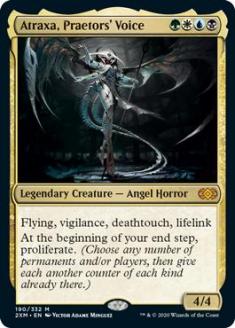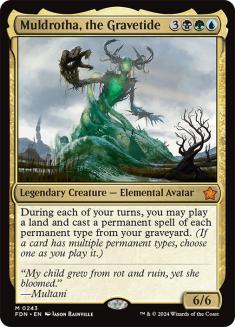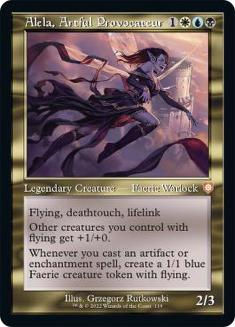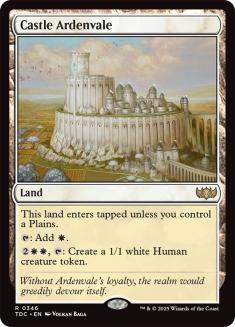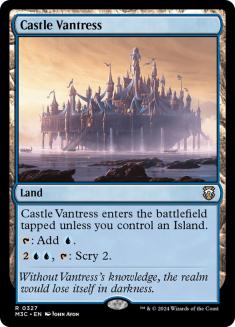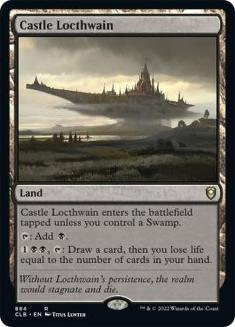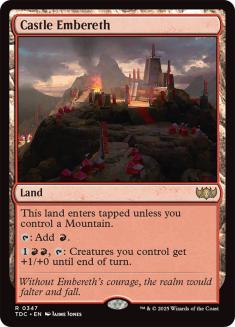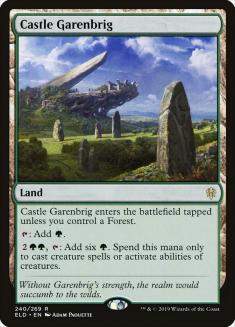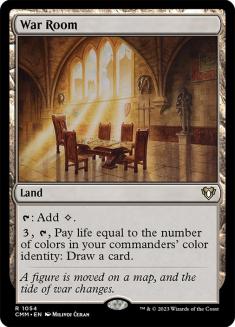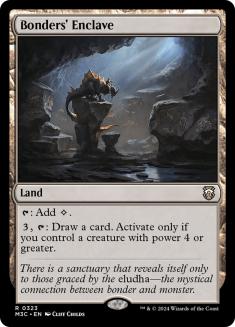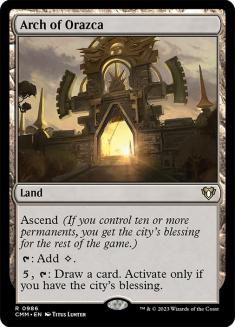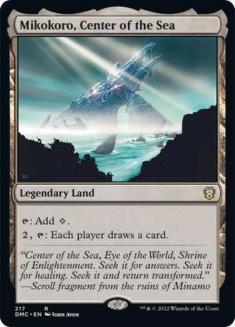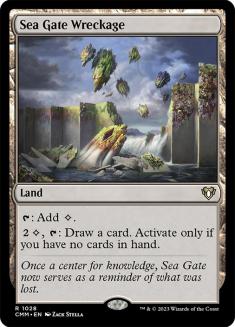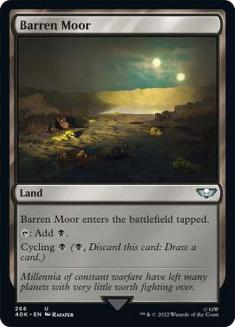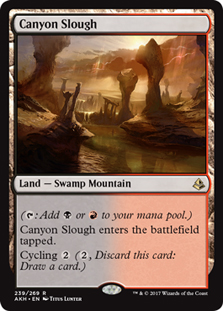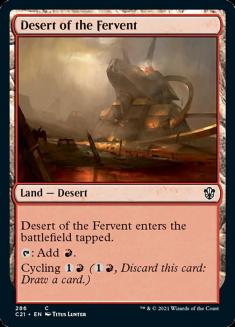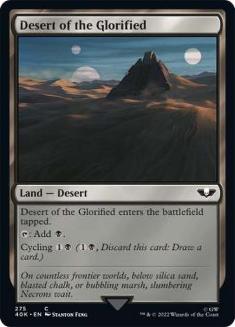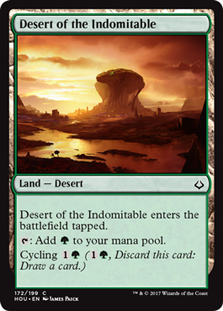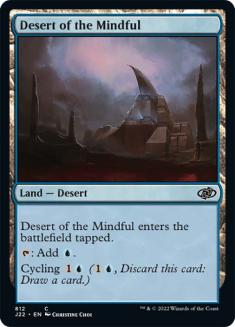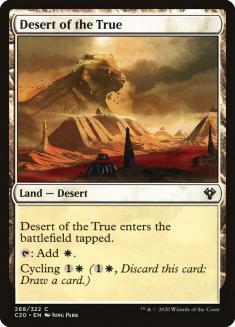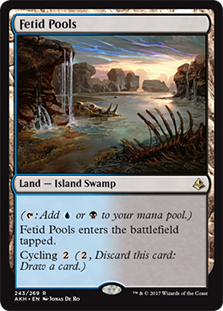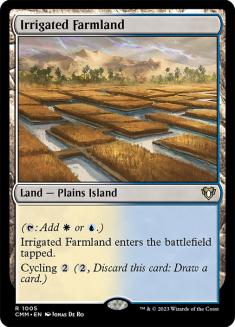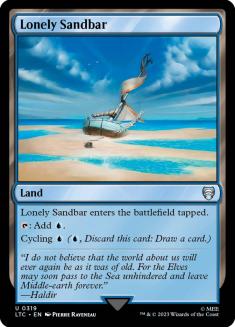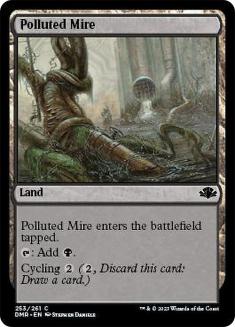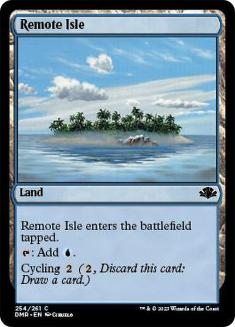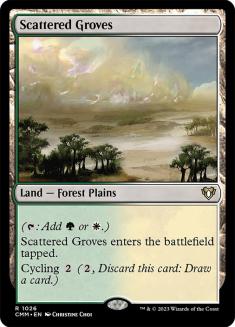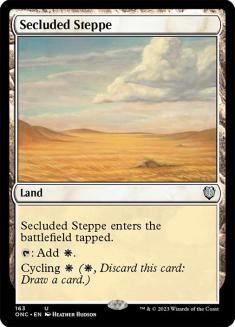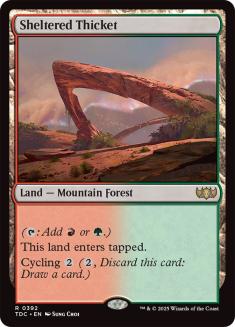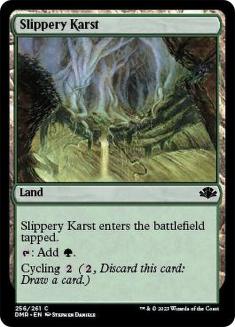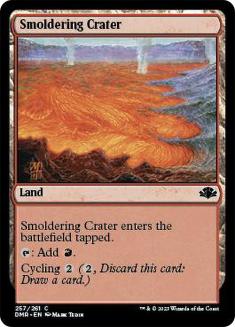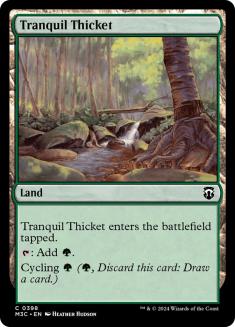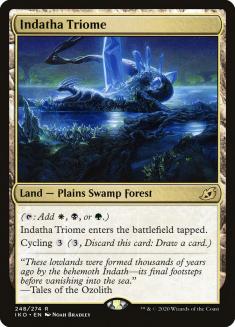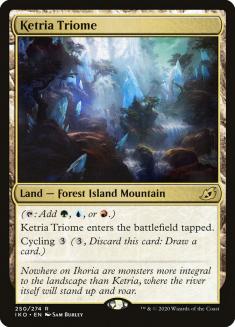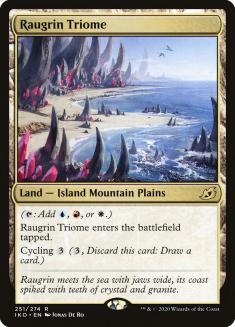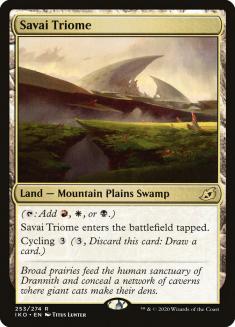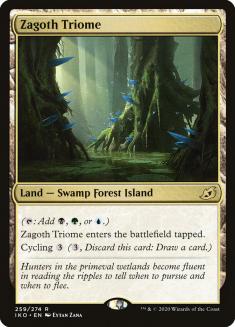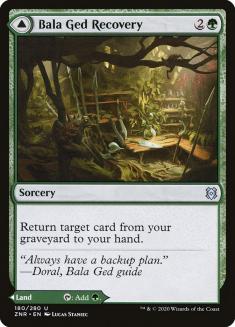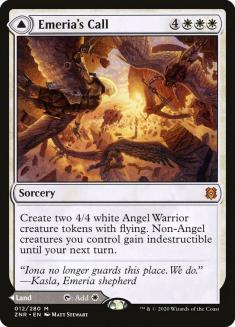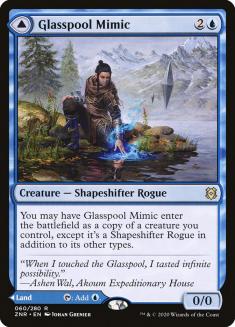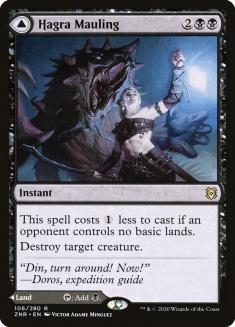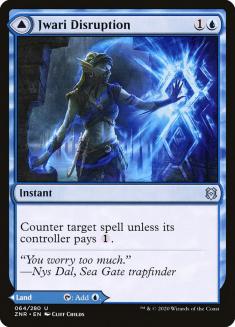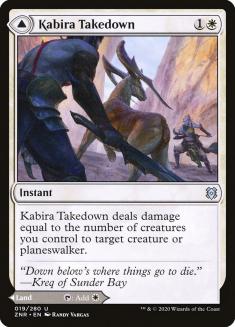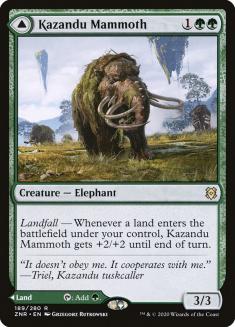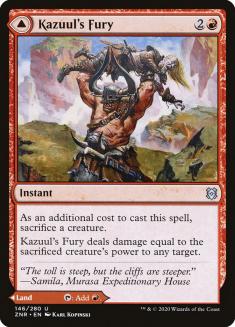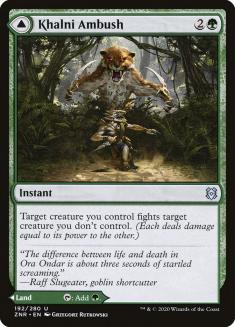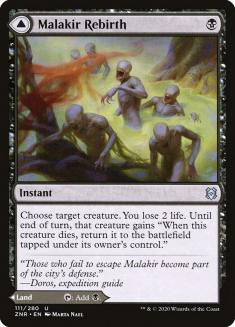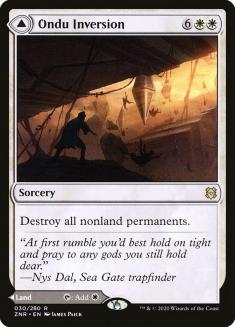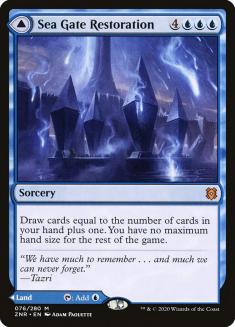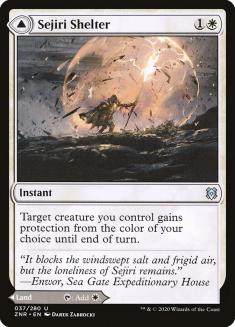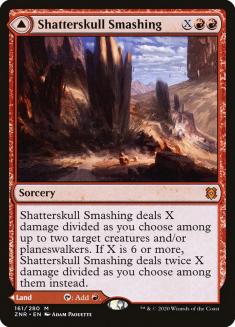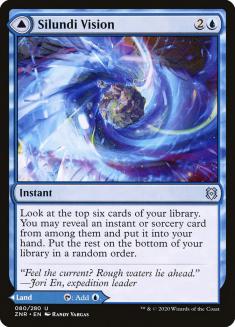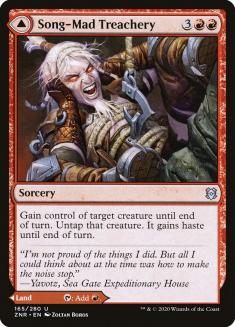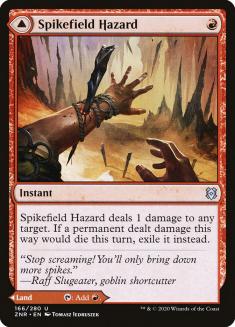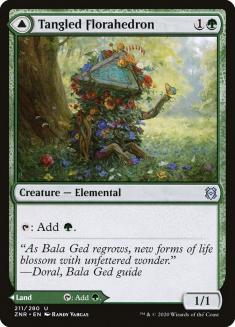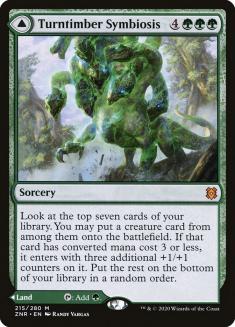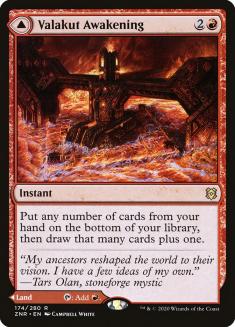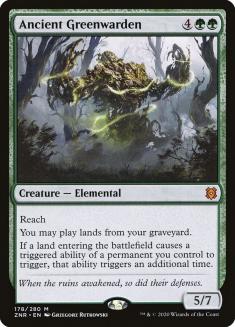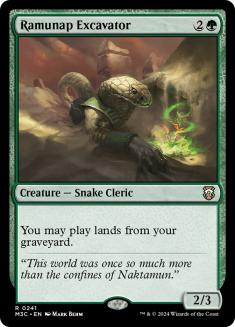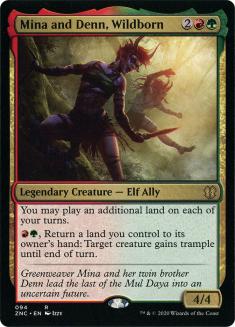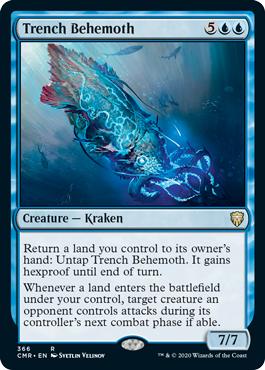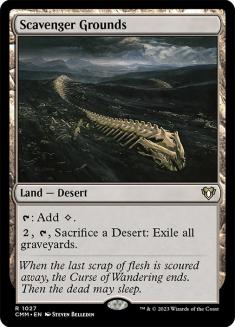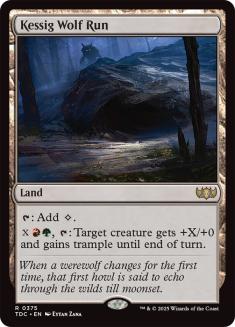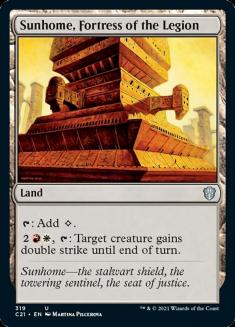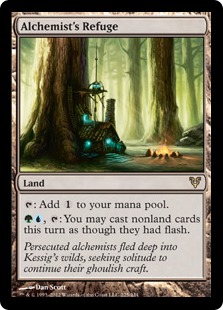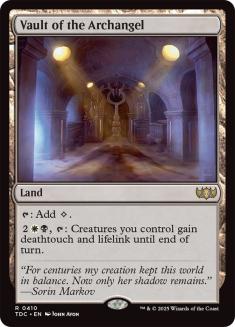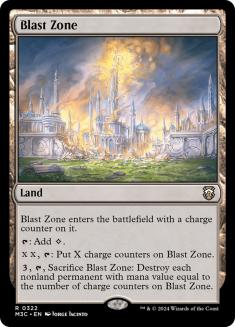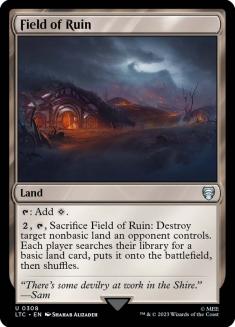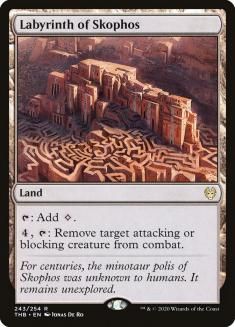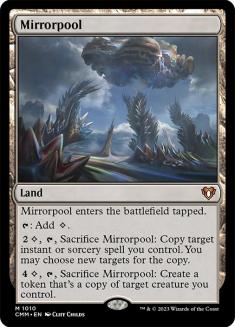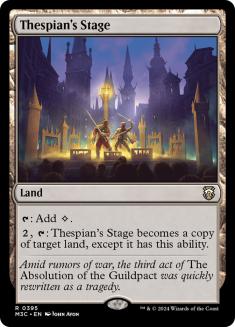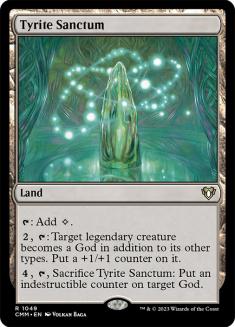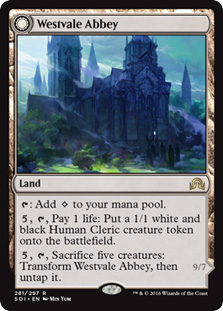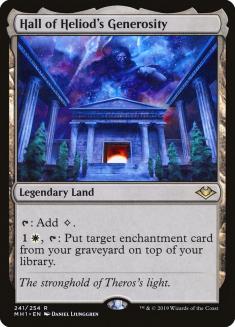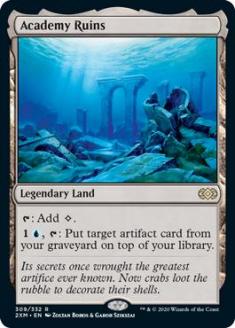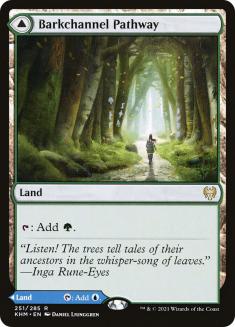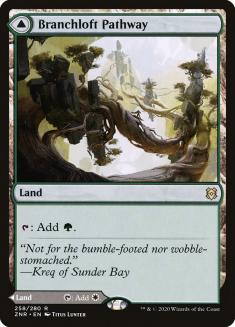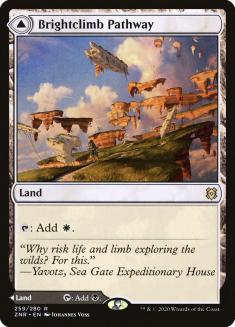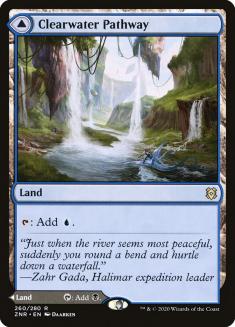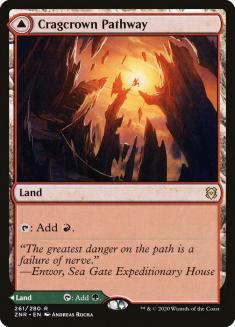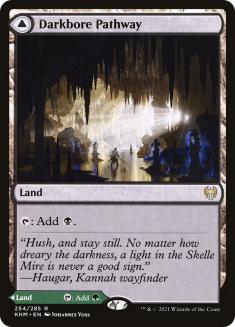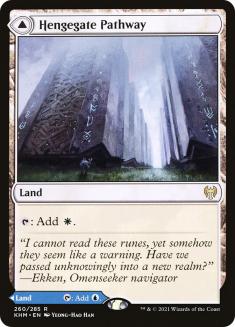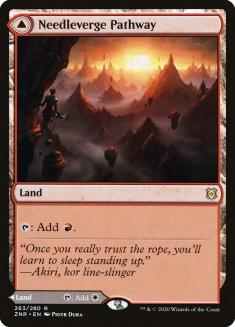Three years ago, I wrote an article called Let’s Talk About Lands where I shared my thoughts on lands in Commander. It’s interesting to go back and read that now in light of all the attention Wizards of the Coast (WotC) has paid to the format in recent years. Some of the things I wrote about are still applicable now, but some haven’t aged as well given the context of the format as it stands today. But paying attention to the lands you put in your Commander deck remains a vital piece of the puzzle when you’re assembling cards for battle.
First off, way too many people are still not playing enough lands in their Commander decks. Before I get into it, let me show a quick table comparing lands people run in tournament decks and what the equivalent would be in Commander decks:
| (Percentage of) Mana-Producing Lands in a 100-Card Commander Deck | Closest 60-Card Deck Equivalent Number of Mana-Producing Lands |
| 41 | 25 |
| 40 | 24 |
| 39 | 23 |
| 38 | 23 |
| 37 | 22 |
| 36 | 22 |
| 35 | 21 |
| 34 | 20 |
| 33 | 20 |
| 32 | 19 |
| 31 | 19 |
| 30 | 18 |
For tournament decks, 22 lands is the bare minimum unless your deck is very aggressive and made up nearly exclusively of one-drops. That’s 36% lands minimum, which equates to 36 lands in Commander. I think we can agree that most Commander decks aren’t built to try to kill the table in the first four or five turns of the game, so your mana curve is highly likely to require a larger percentage of lands. I think it’s pretty clear that most Commander decks would fall into the category of “midrange” decks in playstyle, and you’d never play 22 lands in your midrange tournament deck even if you’re running Llanowar Elves or other mana ramp cards.
“But Bennie,” you might respond, “in a four-player game you’re not going to necessarily lose if you stumble on mana in the first few turns of the game, and my deck having a higher percentage of powerful spells means once I turn the corner, I’ll be able to impact the game more down the road.” Which may be true if your opponents are merciful, and you get lucky. But I advocate taking more control over your fate with solid deckbuilding practices to ensure you’ll be able to participate and interact at every stage of the game and not worry about stalling on mana.
I still hear stories of people cutting lands to squeeze one more cool card into their decks. But don’t just accept my anecdotal take as gospel; let’s dig into the data. Over at EDHREC.com they compile tens of thousands of decklists from Commander fans, so let’s take a look the average data from the most popular commanders there from the past two years.
Currently the #2 ranked Top Commander deck is Atraxa, Praetors’ Voice.
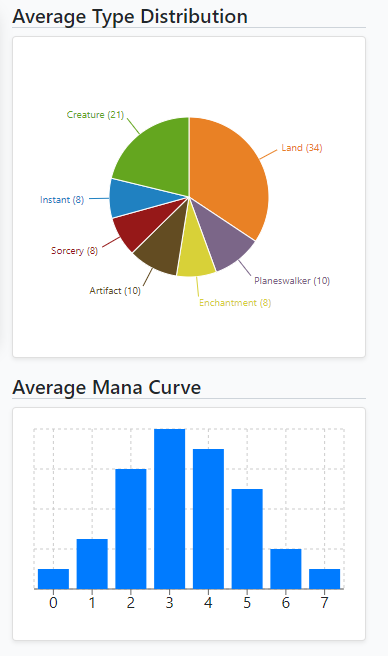
Atraxa is a very color-intensive four mana creature that’s incredibly powerful and it’s in your opponents’ best interests to kill it early and often. If I take a look at the average decklist, in addition to the lands and Sol Ring, it’s relying on a couple of mana rocks, Cultivate, and Kodama’s Reach to fix the colors and get enough mana to cast Atraxa and your higher-cost spells. It seems clear to me that many people are counting on their opponents being merciful – while playing Atraxa – and a fair amount of good luck to be able to cast their spells on time.
Frank Karsten writes some fantastic Magic content using his vast expertise in math to do analysis on what people do and what people should do regarding card choices. An excellent example of this is his article How Many Lands Do You Need to Consistently Hit Your Land Drops. While his analysis isn’t completely apples to apples due to Commander having more generous mulligans, you can draw a lot of valuable lessons from his thoughts here. One table in particular I’m going to reproduce here:
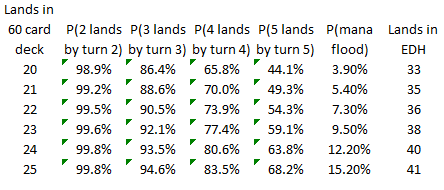
I’ve taken his table called “The Results,” using only the first percentage number there since in Commander everyone is “on the draw,” and I’ve also shown the equivalent lands in Commander based on Karsten’s formula. Based on this table, the average Atraxa deck falls between a tournament deck having 20 and 21 lands, which means over 30% of the time you won’t have four lands by Turn 4. There is an awful lot of your immediate future hinging on drawing that Arcane Signet or Cultivate!
Let’s look at the next most popular commander, Muldrotha, the Gravetide:
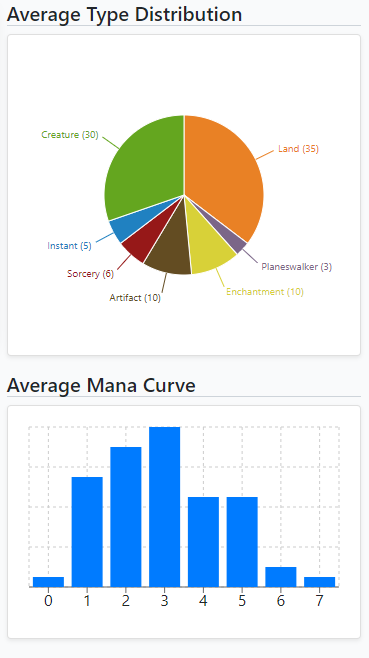
The commander costs two more mana to cast, so the average deck has added one more land to go up to 35. Looking at Karsten’s table, you’re less than 50% likely to draw a fifth land by Turn 5. To make matters worse, the deck naturally wants to run fetchlands that you can play again from the graveyard with Muldrotha’s ability, so you’re actually stripping lands out of the deck for you to draw.
Let’s take a look at one more, this time a nongreen deck that can’t take advantage of green’s mana ramp and mana-fixing spells. Alela, Artful Provocateur is the #8 top commander in the past two years.
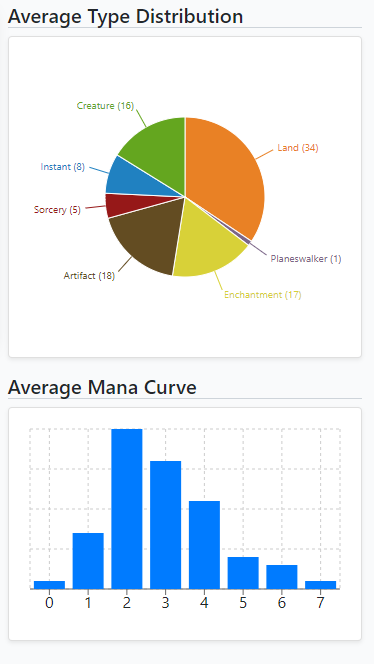
I’m glad to see the 3,800 Alela decklists appear to be paying good attention to their mana curve, but 34 lands is still way too low. Like Atraxa, over 30% of the time you won’t have four lands by Turn 4 and you don’t have access to green. The average decklist makes up for it by including a lot of mana rocks (which accounts for the high number of two-mana cards) and turning a seemingly blind eye to the fact that so much of their mana ramp and color fixing could be blown away by popular cards like Vandalblast and Cleansing Nova.
Most Commander players aren’t going to be cruel enough to cast those spells purely to hose you on mana, but when there are several problem artifacts on the battlefield that need to be dealt with, your mana sources can easily be collateral damage. If you lose a bunch of those and your commander dies, how are you planning on replaying your commander?
My recommendation is to swap out some of your mana ramp for actual lands. Gavin Verhey has an excellent video called “3 Tips to Improve your Commander Deck” where he rightfully points that out in his #1 tip: play more lands.
While other permanents are going to get blown up, your “lands will stick around, and you’ll have uses for them over and over again.” Gavin plays 39-40 minimum in most of his Commander decks.
To bolster the idea of playing more lands, WotC has printed a ton of excellent lands that do stuff other than producing mana. If you’re hesitant about the idea of cutting fun spells for lands, look for lands with special effects and effectively get the best of both worlds!
The Castle cycle from Throne of Eldraine is a great way for mono- and two-color decks to get a land that taps for colored mana and also has a nice effect you can dump extra mana into.
There are a bunch of solid card-drawing lands that can fit in all sorts of decks, turning extra mana into an extra card is always going to be helpful when games go long. In a similar vein, there are a whole bunch of lands that cycle now and many of them are well worth putting in your deck to improve your early land drops:
Ikoria: Lair of Behemoths brought an incredible new cycle of cycling lands that revolutionized Commander manabases:
There were already cycles of cards like Opulent Palace and Arcane Sanctum that are amazing color-fixers because they tap for one of three different types of mana in exchange for entering the battlefield tapped. These newer rare lands have that same ability and drawback, plus they cycle, plus they have the secret superpower of counting as three different land types. This part is particularly nice for ensuring the Castles we talked about above enter the battlefield untapped, as well as all of the check lands like Glacial Fortress or Isolated Chapel.
The existence of the Triomes has me revising one of the stances I made in my original article about lands three years ago. There, I said that way too many people played expensive fetchlands like Windswept Heath and Polluted Deltas in their decks and that you really didn’t need them to fix your manabase adequately. While it still stands that fetchlands aren’t vital to having a good manabase, their utility in fetching the right Triome is so good, if you have fetchlands you should probably run them.
Zendikar Rising brought new double-face card technology with spells that you can play as lands on the reverse side, giving us a bunch of Commander-quality options for ensuring we make land drops early and draw more gas late-game:
When these first came out, there was a lot of discussion about whether these they count as spell slots, land slots, or half of each. My initial thought was that they should mostly count as spell slots that can help ensure your land drops early on, but over time as I’ve played with them, I’ve concluded that it’s more complicated than that.
My opinion now is that they should count as either one or the other;, and you can visually indicate that by sleeving it up with the face it counts as facing up. I still think generally you should look to put these cards in spell slots when you can. If you count one as a land, make sure that most of the time you don’t get greedy and you’re willing to play it as a land, keeping in mind the drawback (for all but the mythic rare cycle) of entering the battlefield tapped is a very real cost in tempo if you play too many lands like that.
There is also added value for these cards if you have ways to reuse them for the other side:
There are a ton of other utility lands you can slot into your decks that provide vital mana early on and fantastic mana-sinks later in the game when you can use the spell-like effect to break games open or grind some value:
Mirrorpool has long been a favorite of mine, and I think it really shines in this format since your commander is often going to get targeted by a removal spell and if you have open mana you can activate Mirrorpool to copy your commander and put your actual commander in the command zone.
The dual-face Pathway lands from Zendikar Rising and Kaldheim offer an interesting choice for color-fixing your decks:
The more I play with these lands the more I like them in Commander. Sure, there will be times when you wish these were proper two-color lands, but most of the time the ability to fix this on the side which provides you the color you need at the time untapped and ready to use is going to be awesome. They’re slam-dunk inclusions in two-color decks, but I’ve been trying them in more color-intensive decks and have yet to feel bad about it.
So, bottom line: WotC has provided the Commander format a ton of fantastic lands in recent years that are going to help fix our colors and provide awesome utility in our land slots, rewarding us with good mana and nice mana sinks throughout our Commander games. Play more lands! Seriously, play more lands.
Which leaves just one question left.
Is Temple of the False God Still a Bad Card?
The answer is still a resounding yes. Even more so now, in my opinion, but let me bring in some more information. In December Tomer from MTG Goldfish put up a YouTube video addressing the question:
In the video, he reached out to Frank Karsten for some more statistical help to evaluate that question. First off, he took a look at the Ruthless Regiment Commander precon deck, which happened to include Temple of the False God. Here’s what the data shows:

So, 25% of the time if you draw Temple you won’t be able to activate it by Turn 5. Almost 20% of the time you won’t be able to activate it by Turn 7. Is that fail rate really acceptable to squeeze one extra mana out of a single land?
The follow-up is obvious: how many lands do you have to run to push that fail rate down to acceptable levels? Karsten again ran the numbers, this time counting land-ramp effects like Rampant Growth and Sakura-Tribe Elder:

If you run 41 other lands and land-ramp spells in addition to Temple of the False God, you can push that fail rate down to 15% of the time by Turn 5, and 10% of the time by Turn 7. Now, I’m pretty sure the vast majority of the decks running Temple aren’t also running 41 other lands, in which case you’ll need to be running a fair number of land ramp spells, which means you’re probably running green.
Which begs the question: you’re already ramping your lands with these spells; do you really need to run such a mediocre land to squeeze one more extra mana from your land base? Why not swap out Temple for any of the utility lands I mentioned above? Those lands will always tap for mana in the early part of the game, and later on will provide you with something to do with all your extra mana when you’re low on action cards in hand.
Now, if your commander is expensive and you’re in green and the entire focus of your deck is to power out that commander as quickly as humanly possible or else your deck does nothing, then by all means play Temple of the False God. There are exceptions to every rule. But there are very few good reasons to play that card, and WotC keeps making more and more reasons not to play it with every set they put out.
So, what are your favorite utility lands to play with Commander?
Do me a solid and follow me on Twitter! I run polls and get conversations started about Commander all the time, so get in on the fun! I’d also love it if you followed my Twitch channel TheCompleteCommander, where I do Commander, Brawl, and sometimes other Magic-related streams when I can. If you can’t join me live, the videos are available on demand for a few weeks on Twitch, but I also upload them to my YouTube channel.
And lastly, I just want to say: let us love each other and stay healthy and happy.
Visit my Decklist Database to see my decklists and the articles where they appeared!


